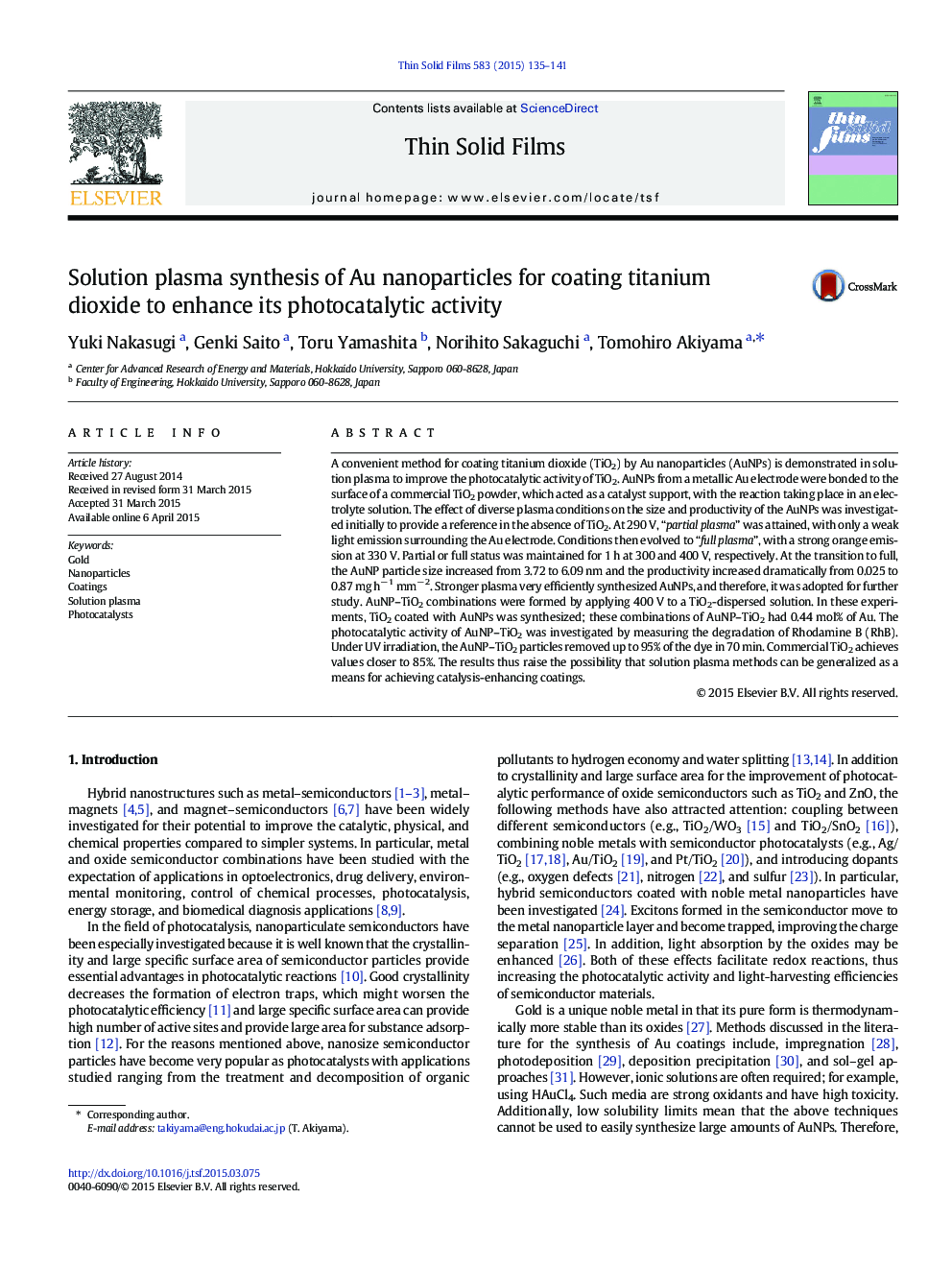| Article ID | Journal | Published Year | Pages | File Type |
|---|---|---|---|---|
| 8034112 | Thin Solid Films | 2015 | 7 Pages |
Abstract
A convenient method for coating titanium dioxide (TiO2) by Au nanoparticles (AuNPs) is demonstrated in solution plasma to improve the photocatalytic activity of TiO2. AuNPs from a metallic Au electrode were bonded to the surface of a commercial TiO2 powder, which acted as a catalyst support, with the reaction taking place in an electrolyte solution. The effect of diverse plasma conditions on the size and productivity of the AuNPs was investigated initially to provide a reference in the absence of TiO2. At 290 V, “partial plasma” was attained, with only a weak light emission surrounding the Au electrode. Conditions then evolved to “full plasma”, with a strong orange emission at 330 V. Partial or full status was maintained for 1 h at 300 and 400 V, respectively. At the transition to full, the AuNP particle size increased from 3.72 to 6.09 nm and the productivity increased dramatically from 0.025 to 0.87 mg hâ 1 mmâ 2. Stronger plasma very efficiently synthesized AuNPs, and therefore, it was adopted for further study. AuNP-TiO2 combinations were formed by applying 400 V to a TiO2-dispersed solution. In these experiments, TiO2 coated with AuNPs was synthesized; these combinations of AuNP-TiO2 had 0.44 mol% of Au. The photocatalytic activity of AuNP-TiO2 was investigated by measuring the degradation of Rhodamine B (RhB). Under UV irradiation, the AuNP-TiO2 particles removed up to 95% of the dye in 70 min. Commercial TiO2 achieves values closer to 85%. The results thus raise the possibility that solution plasma methods can be generalized as a means for achieving catalysis-enhancing coatings.
Related Topics
Physical Sciences and Engineering
Materials Science
Nanotechnology
Authors
Yuki Nakasugi, Genki Saito, Toru Yamashita, Norihito Sakaguchi, Tomohiro Akiyama,
